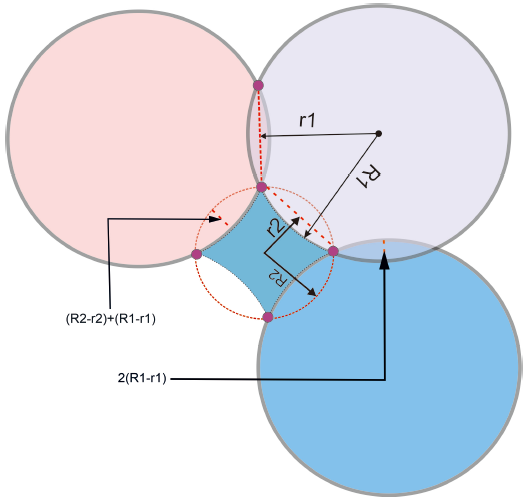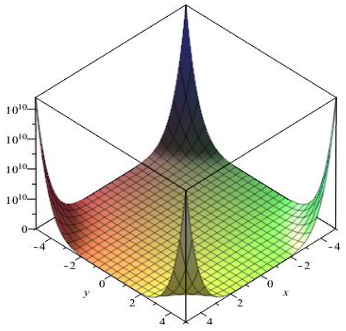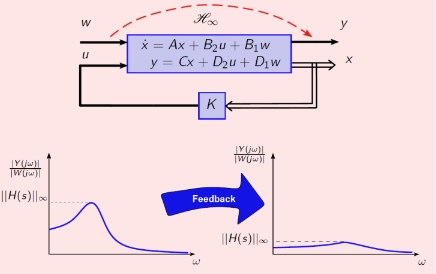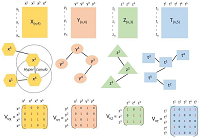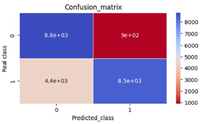The Jacobsthal-Collatz-Terras model of conjecture the natural numbers in κq + 1 problems
Abstract
In the work, the unity of the model in both directions of the change of the power of two of the conjecture of natural numbers structured in the form of a set parametrized by a set of odd θ sequences θ × 2 n is justified for the first time. It is shown that the graphs of the direct n(tst) → ∞ and reverse n → 0 conjecture of numbers are correctly displayed by the branching diagram of the sequences oriented along the time axis of the full stop of Terrase. The distance between neighbouring nodes is shown to correlate with the Collatz function. The distance δm(p), κ = ακCκq±1 between adjacent nodes is shown to be correlated with the Collatz function. The obtained formula for calculating the period Tκ = ln2(1 + ακκ) according to the degree of formation of powers n. Based on the analysis of regularities of recurrent Jacobsthal numbers and Terras complete stop time, it is shown that the Collatz problem is a partial case of the general Jacobsthal-Collattz-Terrase model of the conjecture of numbers N in both directions of the change of the power of two. Based on this model, the formation of tst{q} sequences was established for numbers with the same lengths as the Collatz sequence CSq.
References
[1]Lagarias JC. The 3x + 1 problem: An overview. In: The Ultimate Challenge: The 3x + 1 Problem. American Mathematical Society; 2010. Volume 1. pp. 3–29. doi: 10.48550/arXiv.2111.02635
[2]Barina D. Computational Verification of the Collatz Problem. The Journal of Supercomputing. 2020; 77: 2681–2688.
[3]Gurbaxani BM. An Engineering and Statistical Look at the Collatz (3n + 1) Conjecture. Available online: https://doi.org/10.48550/arXiv.2103.15554 (accessed on 12 September 2024).
[4]Sultanov E, Koch C, Cox S. Collatz Sequences in the Light of Graph Theory. University Potsdam; 2020. doi: 10.25932/publishup-48214.
[5]Schorer P. Are we near solution to the 3x + 1 problem? A discussion of several possible strategies. Available online: https://www.academia.edu/7218916/A_Solution_to_the_3x_1_Problem (accessed on 12 September 2024).
[6]Hu Z. The Analysis of Convergence for the 3X+1 Problem and Crandall Conjecture for the aX+1 Problem. Advances in Pure Mathematics. 2021; 11(5): 400–407. doi: 10.4236/apm.2021.115027
[7]Tao T. Almost all orbits of the Collatz map attain almost bounded values. In: Forum of Mathematics, Pi. Cambridge University Press; 2022. Volume 10. p. e12. doi: 10.1017/fmp.2022.8
[8]Idowu MA. A novel theoretical framework formulated for information discovery from number system and Collatz conjecture data. Procedia Computer Science. 2015; 61: 105–111. doi: 10.1016/j.procs.2015.09.165
[9]Aberkane IJ. A Collatz Proof from The Book. Available online: https://hal.science/hal-03364693v1 (accessed on 12 September 2024).
[10]Kontorovich AV, Lagarias JC. Stochastic models for the 3x + 1 and 5x + 1 problems and related problems. In: The Ultimate Challenge: The 3x + 1 Problem. American Mathematical Soc.; 2010. pp. 131–188.
[11]Rasool M, Belhaouari SB. From Collatz Conjecture to chaos and hash function. Chaos, Solitons and Fractals. 2023; 176: 114103. doi: 10.1016/j.chaos.2023.114103
[12]Barghout K. On the probabilistic proof of the convergence of the Collatz conjecture. Journal of Probability and Statistics. 2019; 2019: 1–11. doi: 10.1155/2019/6814378
[13]Diedrich E. Resolving the Collatz Conjecture: A Rigorous Proof through Inverse Discrete Dynmical Systems and Inverse Algebraic Trees. Available online: https://www.preprints.org/manuscript/202310.0773/v17 (accessed on 12 September 2024).
[14]Dzial TR. Collatz-Weyl Generators: High Quality and High Throughput Parameterized Pseudorandom Number Generators. Available online: https://doi.org/10.48550/arXiv.2312.17043 (accessed on 12 September 2024).
[15]Kosobutskyy P. The Collatz problem as a reverse problem on a graph tree formed from Q·2 n Jacobsthal-type numbers. arXiv. 2023.
[16]Kosobutskyy P. Comment from article “Two different scenarios when the Collatz Conjecture fails”. General Letters in Mathematics. 2023; 12(4): 179–182. doi: 10.31559/glm2022.12.4.4
[17]Kosobutskyy P, Rebot D. Collatz conjecture 3n±1 as a Newton Binomial Problem. Computer Design Systems. Theory and practice. 2023; 5(1): 137–145. doi: 10.23939/cds2024.02.061
[18]Choi JY. Ternary Modified Collatz Sequences and Jacobsthal Numbers. Journal of Integer Sequences. 2016; 19(7).
[19]Horadam AF. Jacobsthal representation numbers. The Fibonacci Quarterly. 1996; 34(1): 40–54. doi: 10.1080/00150517.1996.12429096
[20]Williams M. Collatz conjecture: an order isomorphic recursive machine. Available online: https://www.preprints.org/manuscript/202203.0401/v2 (accessed on 12 September 2024).
[21]Catarino P, Campos H, Vasco P. On the Mersenne sequence. Annales Mathematicae et Informaticae. 2016; 46: 37–53.
[22]Carbo-Dorca R. Boolean Hypercubes, Mersenne Numbers and the Collatz Conjecture. Journal of Mathematical Sciences and Modelling. 2020; 3(3): 120–129. doi: 10.33187/jmsm.776898
[23]Carbo-Dorca R. Collatz conjecture redefinition on prime numbers. Journal of Applied Mathematics and Physics. 2023; 11(1): 147–157. doi: 10.4236/jamp.2023.111011
[24]Terras R. A stopping time problem on the positive integers. Acta Arithmetica. 1976; 3(30): 241–252.
[25]Volkov S. A probabilistic model for the 5x+ 1 problem and related maps. Stochastic Processes and their Applications. 2006; 116(4): 662–674. doi: 10.1016/j.spa.2005.11.007
[26]Green L. The Negative Collatz Sequence. Available online: https://aplusclick.org/pdf/neg_collatz.pdf (accessed on 12 September 2024).
[27]Silva TOE. Maximum excursion and stopping time record-holders for the 3x + 1 problem: Computational results. Mathematics of Computation. 1999; 68(225): 371–384.
[28]Andaloro PJ. The 3x + 1 problem and directed graphs. The Fibonacci Quarterly. 2002; 40(1): 43–54. doi: 10.1080/00150517.2002.12428680
Copyright (c) 2025 Author(s)

This work is licensed under a Creative Commons Attribution 4.0 International License.





